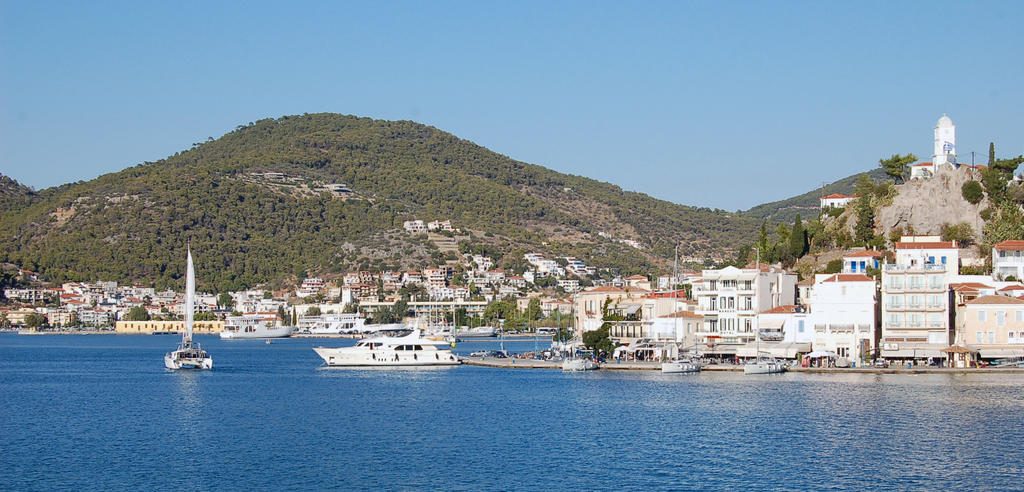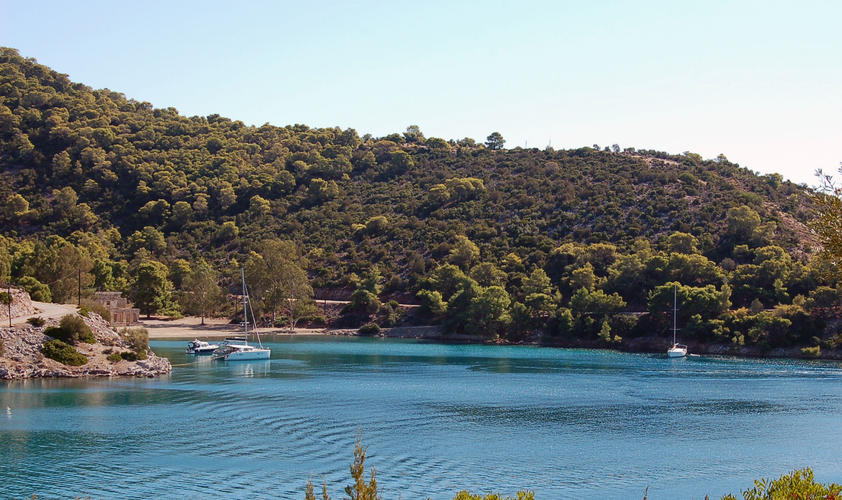The island of Póros is actually two islands, which in antiquity were named Sfairía and Kalavría. Sfairía was the small island opposite Galatás, on which today the city of Póros is amphitheatrically spread. It is connected with the much larger island of Kalavría, which is basically the island of Póros minus its town, via a bridge. Sfairía took her name from Pélopa’s charioteer, Sfaíro, a very gifted charioteer thanks to who Pélopas won the famous chariot race with Oinómaos and became King of Ilída.

The name “Kalavría” probably derives from “Kalí ávra” (good breeze, something along the lines of Buenos Aires) and is related to the patron of the island, Poseidon.
Initially, the island of Póros was connected with the opposite coasts of Pelopónnisos and was severed during the later archaic period due to land sedimentation, which created Póros channel.
In the ancient city of Kalavría, ruins have been found of a temple dedicated to god Poseidon. The temple was built on 190m altitude at Palátia position, between the two highest peaks of the island, Vígla (380m) and Profítis Ilias (320m), and it may be the most magnificent spot on the island. This temple was built around the 6th cen. BC, and unfortunately, very few remains exist today as most of the findings were stolen from neighbouring islands to be used as building materials. Whatever was left is exhibited in the archaeological museum of Póros.
During the Byzantine era, the islands of the Saronic gulf suffered by piratic raids. In the island of Póros, the pirates mainly used the bay of Barbariá (Vagioniá). During the Turkish rule, the island remained independent.
In 1830, the Hellenic fleet of the first government was based on the island, however in the summer of 1831, during the civil war between Kapodístrias (the first prime minister) and the island of Ýdra, Miaoúlis (a captain and hero of the Greek Revolution against the Ottoman oppression) burned a part of the Hellenic fleet so that the leadership of the Hellenic Navy will not go to Russian hands.
The city of Póros, with its traditional blue and white islandic colours, is very pretty and deserves a walk around. In one of your walks, make sure you end up in the old Clock, on top of the hill around which the town is built. The view is magnificent, especially close to sunset, when the last light of the day shades the slopes of Adéres mountains, Galatás, the Lemon Grove etc.

The bay of Rósikos Náfstathmos took its name from the sad happenings of 1831. On its beach there are remains of the Russian shipyard. The bay is popular to yachts because of its natural beauty. In the first 10 days of July, every two years, Póros hosts the Naval Week, the most glorious celebration of the island.




